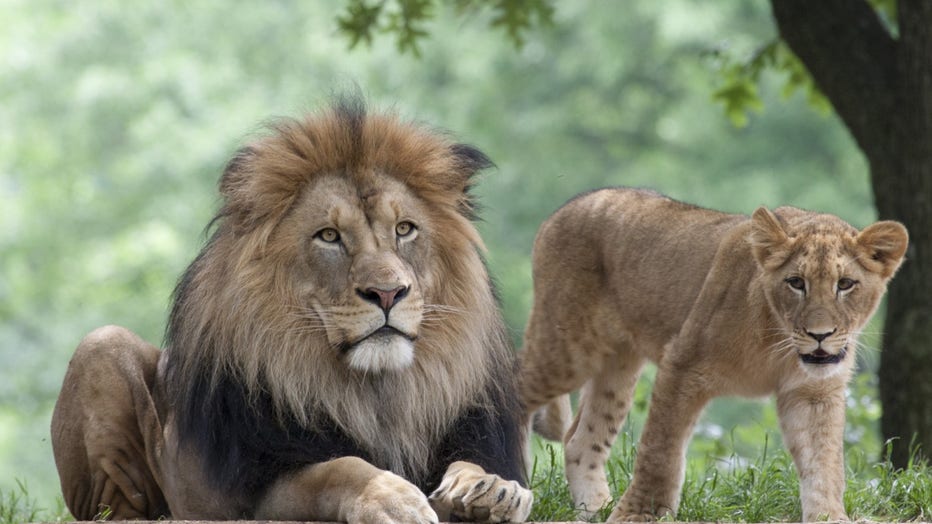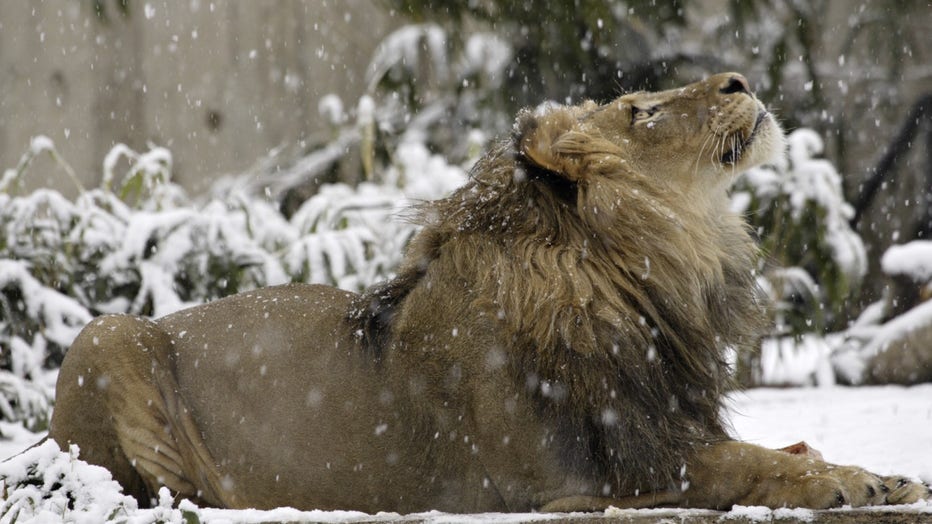Luke the lion dies at the National Zoo after years long battle with spinal disease
Photo credit: Mehgan Murphy, Smithsonian’s National Zoo
WASHINGTON - The Smithsonian’s National Zoo and Conservation Biology Institute is mourning the loss of longtime resident Luke the lion, according to a press release from the Zoo. He was 17-year-old.
According to Zoo officials, Luke was humanely euthanized on Wednesday, October 19 after a long bout with spinal disease.
Luke was an African lion who had lived at the National Zoo since 2006. He was born at a private reserve in South Africa in 2005 before arriving at the Zoo in October 2006, following a breeding recommendation from the Association of Zoos and Aquariums’ Species Survival Plan, a group that determines which lions should be considered for breeding based on their genetic makeup, needs, temperament and overall health.
At the time, Luke was the most genetically valuable lion in the North American population because his genes were not represented in U.S. zoos. From 2010 to 2014, Luke sired 13 cubs with his mates, Naba and Shera, many of whom were transported to North American zoos for breeding and research.
Luke's spinal disease was first revealed in 2016, when a CT scan revealed a lesion on the lion’s spine.
At the time, Zoo officials elected to not have Luke undergo surgery because of the "significant complications that could arise related to post-surgical care."
READ MORE: Rusty the red panda, who once famously escaped the National Zoo, has died
Over the years, the Zoo's staff gave Luke various treatments for his condition, including steroid injections, anti-inflammatory medications, deep-tissue laser therapy, electroacupuncture and dry-needle acupuncture.
Despite the treatments, Luke's illness persisted and this week the staff noticed that Luke had lost 17.6 pounds during his routine weigh in. The staff says they also noticed Luke has lost his appetite.
While investigating the cause of the appetite and weight loss on Wednesday, Zoo veterinarians found several cystic masses throughout his liver. They also found that Luke's spinal condition had "moderate-to-severe progression" and that several of his cervical vertebra had fused.

Photo credit: Mehgan Murphy, Smithsonian’s National Zoo
As a result of the discovery, the veterinarians decided that "Luke’s overall long-term quality of life was considered poor," and they decided to euthanize him.
"Luke was truly the ‘king’ of the Great Cats exhibit," said Craig Saffoe, curator of the National Zoo's Great Cats exhibit. "He was gentle with his mates, Naba and Shera, and an extremely patient and protective father to all 13 of the cubs he sired. Luke has left a lasting legacy, not only in the cubs he contributed to his species’ survival, but also in the millions of visitors who were able to gain a deeper knowledge of and appreciation for African lions because of who he was as the patriarch of his pride."
The release also indicates that Luke gave the Zoo's staff valuable insight into the breeding behaviors of lions, and contributed to his species' survival by helping scientists learn more about the African lion's reproductive physiology.

Photo credit: Mehgan Murphy, Smithsonian’s National Zoo
You can see the Zoo's Great Cats exhibit from home by watching the Zoo's Lion Cam.

